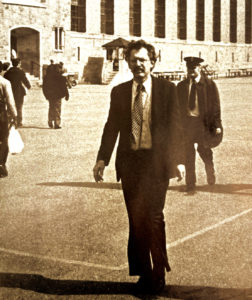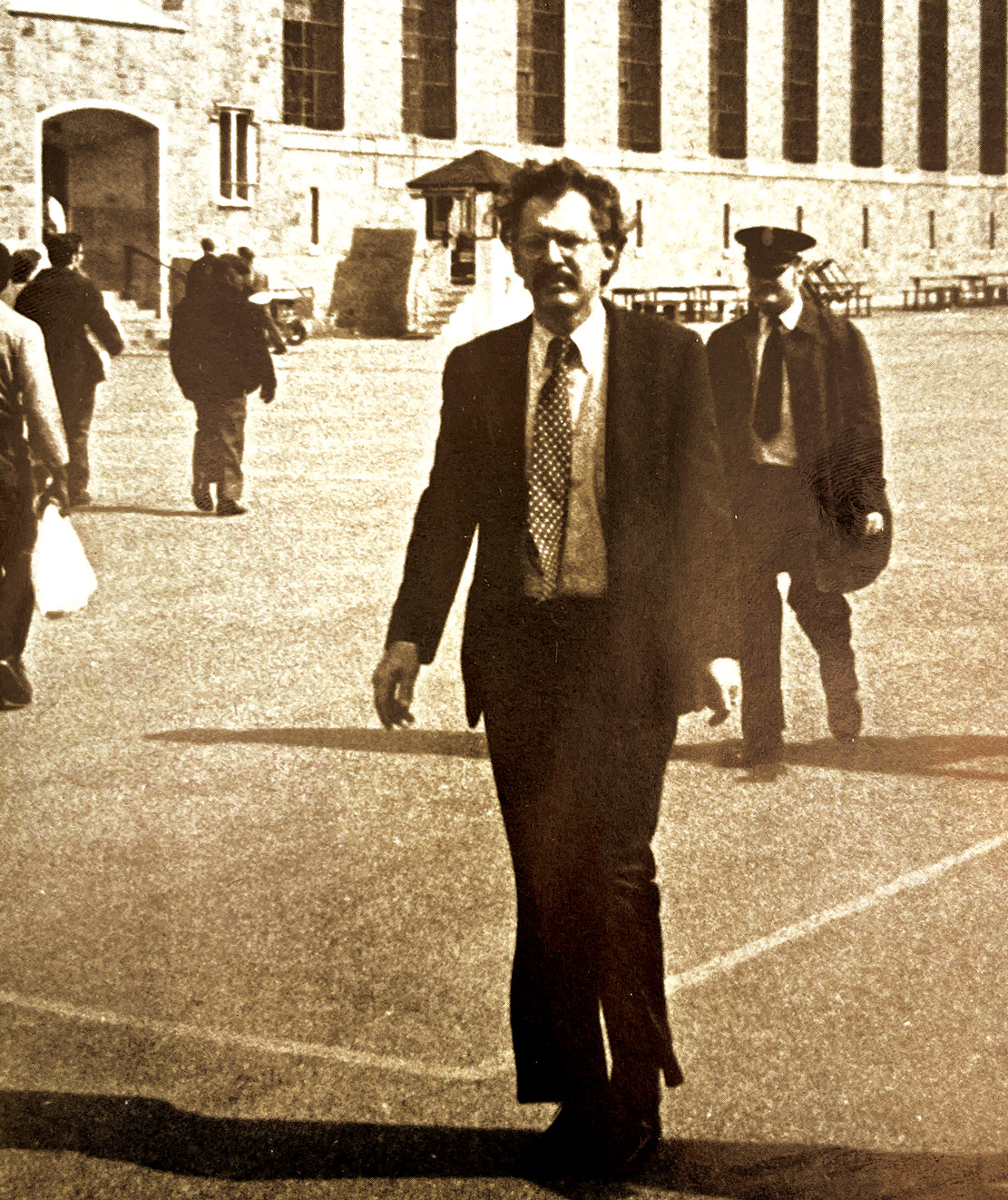Jim Harithas
 The Everson Museum of Art is saddened to learn of the passing of James Harithas (December 1, 1932-March 23, 2023, Houston, Texas), who served as the Everson Museum of Art’s director from 1971-1974.
The Everson Museum of Art is saddened to learn of the passing of James Harithas (December 1, 1932-March 23, 2023, Houston, Texas), who served as the Everson Museum of Art’s director from 1971-1974.
Harithas came to the Everson after serving as the Director of the Corcoran Gallery in Washington, DC. When he arrived in Syracuse, Harithas hired David Ross, a newly graduated Syracuse University student as the Everson’s Curator of Video Art, the first such position anywhere in the country. Along with Ross (who would later become the director of the Whitney Museum of art and the San Francisco Museum of Modern Art), Harithas put on Yoko Ono’s first-ever solo museum exhibition, This is Not Here.
Ono arrived in Syracuse with her husband, John Lennon, who served as her guest artist on the project. Together, they filled the Everson with interactive artworks that included paintings, sculpture, objects, music, and performance events. A rumor spread throughout the community that the exhibition’s opening would double as a Beatles reunion, and thousands of fans thronged the Museum. Although a Beatles reunion never happened, John and Yoko spent the evening after the opening jamming with Ringo Starr and Eric Clapton.
Harithas and Ross turned the Everson into a hub of early video art. Nam June Paik and Charlotte Moorman performed an early version of Paik’s legendary Video Cello in 1972. Harithas orchestrated the first museum exhibitions for painter Joan Mitchell (1972) and Marilyn Minter (1974). Even though his connections with experimental artists ran deep, Harithas honed his signature populist touch in Syracuse. Under Harithas, artists baked bread in the Museum, built a gigantic elephant slide, and held midnight screenings of John Waters movies.
Harithas was especially committed to working with Central New York’s incarcerated population. During the time of the Attica riots, Harithas taught classes at the Auburn Correctional Facility, where he mentored artists such as Juan Cruz, who became a fixture in Syracuse’s art scene after his release from prison. Harithas’ work with the Auburn population resulted in the exhibition, From Within, a partnership with the National Collection of Fine Arts at the Smithsonian Institution in 1973.
Harithas left Syracuse for Houston, where he helmed the Contemporary Arts Museum, Houston. After his tenure at the Contemporary Arts Museum, Harithas would go on to found the Art Car Museum and the Station Museum of Contemporary Art in Houston. Along with his wife, Ann, Harithas would have an outsized influence in promoting the work of artists with political and socially minded practices.
Fifty years later, Harithas’ leadership still resonates within the Museum as the Everson embarks on exhibitions that serve diverse populations and amplify the voices of determined artists.
“Jim transformed the E — and Syracuse — into a destination for cutting-edge, risk/taking art — he put us on the map.
“Jim welcomed innovation, experimentation, and a broad definition of creativity and artistic expression. Never afraid to push the envelope or break the rules, Jim was a legendary figure whose belief in trusting artists to express themselves was unparalleled and his impact can be felt to this day.
“He set the bar high for the Everson directors who followed, and I’m glad that he was proud of the work we are doing today. He left big footsteps behind,” said Elizabeth Dunbar, Director of the Everson Museum of Art.


